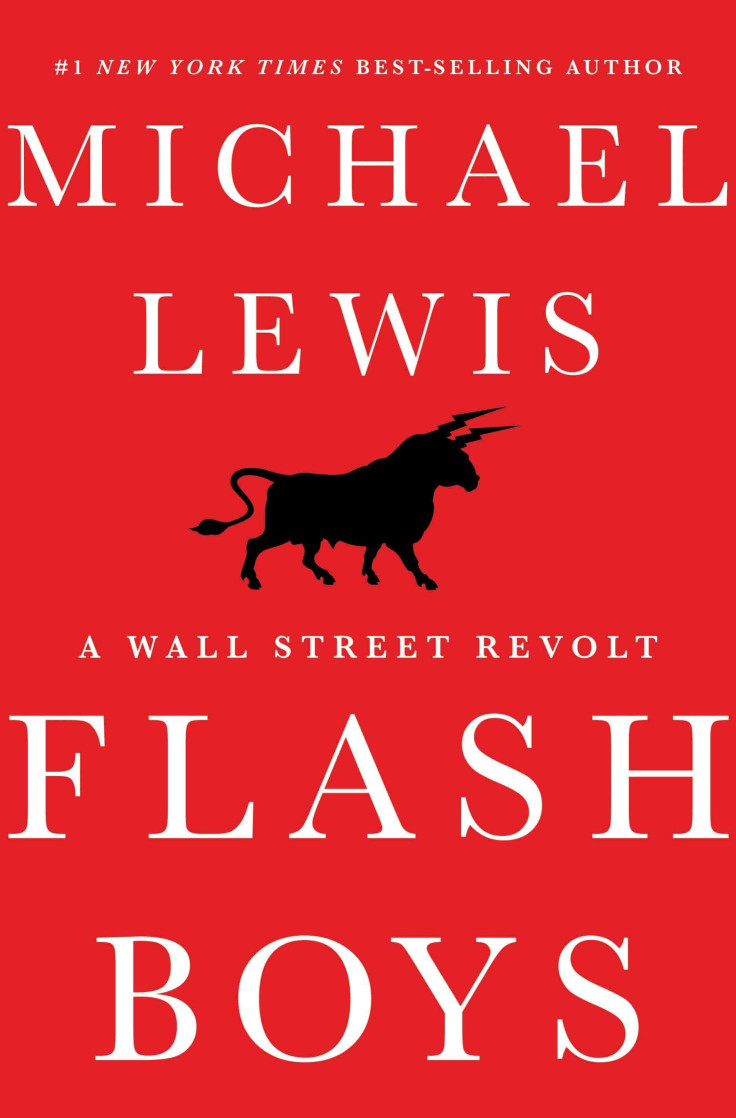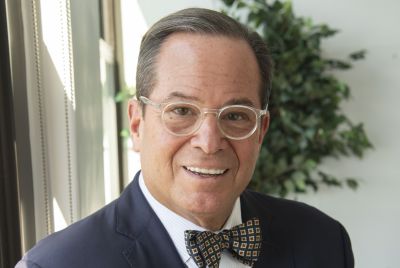Michael Lewis' "Flash Boys" Exposes Shady World Of Dark Pools; Some Funds Have Already Pulled Out

One of the most secretive and fast-growing practices on Wall Street -- the use of dark pools -- is about to be thrust from the shadows into the harsh light of day by author Michael Lewis in his much-anticipated new book, “Flash Boys,” a copy of which was obtained by the International Business Times prior to publication.
The off-exchange platforms that let traders buy and sell stock anonymously, under the radar of the rest of the market, have quietly surged in practice by large institutional funds and pension funds. Such dark pools, which are now responsible for about 12 to 15 percent of all trades in the U.S., have aroused the concerns of regulators because some sophisticated players such as high-frequency traders are able to unfairly exploit the system. High-frequency trading is the controversial practice in which firms use sophisticated computer algorithms to trade securities in milliseconds. On Wall Street, information is the coin of the realm and anyone who has an inside track on a large fund’s trades can exploit that knowledge -- a pension fund trying to buy 100,000 shares of Microsoft at a certain price range may prefer to hide that order inside the dark pool instead of trading it on a public exchange such as the Nasdaq. But by paying for a special connection to the dark pool, high-frequency traders are able to find that pension fund's order, go over to the Nasdaq and buy it at a lower price, and then quickly sell it to the buyer in the dark pool at a higher price.
Lewis takes aim at several big banks, including Credit Suisse, Goldman Sachs and the former Merrill Lynch, whose giant dark pools have evolved from a safe place for clients to park their money in a dangerous realm full of high-frequency trading sharks who always win out due to this imbalance of information.
“The hidden passages and trapdoors that riddled the exchanges enabled a handful of players to exploit everyone else,” writes Lewis. The author compares these banks who run dark pools to casino owners who need players to attract other players. “You invite a few to start Texas Hold ‘Em by telling them that the deck doesn’t have any jacks or queens and that they won’t tell that info to other people joining the game … By 2013, the world’s financial markets were designed to maximize the number of collisions between ordinary investors and high-frequency traders – at the expense of ordinary investors.”
In recent months, some institutional funds have stopped trading in some of the biggest dark pools because they feel that they’re being burned by high-frequency traders who catch on to their trading strategies, several former bank executives tell IBTimes. “If I’m being screwed, why am I in this pool?” says one executive. “What is the advantage of being in the dark pool than in [the public exchanges]?”
And how do you get these dupes into this rigged casino? By paying brokers to bring them in, claims Lewis. These exchanges reward “makers” -- those brokers who express an intention to buy or sell shares -- by paying them and they require “takers” -- those who end up on the other end of those deals -- to pay a fee for each transaction. Thus, the brokers have an incentive to allow high-frequency traders who thrive on initiating thousands of lighting-quick deals, because they’ll get paid for each one of them. “It was entirely possible that a broker’s own traders were trading against the customers in the dark pool,” writes Lewis. Even worse, the banks operating the dark pools make trades using their own money – a practice known as propriety trading that was ostensibly banned by the Volcker Rule as part of comprehensive financial reform – by taking advantage of their inside knowledge of all the trading activity within these exchanges.
The key to getting information about the trading intentions of large institutional funds is to pay for their order flow. Chris Nagy, who was responsible for order flow for TD Ameritrade, the giant online brokerage, tells Lewis that every year banks and high-frequency trading firms would fly to Omaha to do handshake deals – face to face “because no one involved wanted to leave a paper trail.” The payment for the order flow is as “off the record as possible,” says Nagy. “They never have an email or even a phone call. You had fly down to meet with us.” And that transaction, usually buried by the banks under “Other Revenue” on their balance sheets, reaped them money many times over.
TD sold the right to execute its customers’ orders to high-frequency trading firms for hundreds of millions a year, Charles Schwab sold its flow to UBS back in 2005 in an 8-year deal for only $285 million and paid an undisclosed sum to giant hedge fund Citadel to execute its trades. They got a great deal since that inside information about these large orders could be taken advantage of inside the dark pools by high-frequency traders taking advantage of slow-footed investors. “Schwab left at least a billion dollars on the table,” says Nagy.
So why do these institutional funds, some of which are quite savvy about trading, agree to get suckered into a rigged game of Texas Hold ‘Em? “They deserve some of the blame,” says a former executive at a large Wall Street firm. “They just sat there and didn’t do too much about it.” He explained that these funds depend on different units of the banks for research reports about investing, which guide their trading decisions. If the funds complain too much about their performance in the dark pools, they lose access to the research.
Some in the industry, such as Royal Bank of Canada’s (RBC) former global head of equities product management, John Schwall, were shocked at how banks were using dark pools to let high-frequency traders “make money from everyone else’s retirement account. I knew who was being screwed, people like my mom and pop.” He started talking to insiders at other banks, including an analyst at Merrill Lynch, whose superiors tried getting him to change an analysis he did that found that the bank’s dark pool was actually costing the customers while profiting the bank. “They kept on telling him to change his report,” Schwall told Lewis.
And the regulators don’t seem prepared to handle or to even understand the nature of the risk – “it’s over their heads,” says one former bank executive. “They have no idea what is really happening.” The Securities and Exchange Commission, for one, has been considering new rules for several years but has yet to make a final decision. Brad Katsuyama, who ran RBC's U.S. trading desk, became alarmed at the perils of high-risk trading and came up with a new computer program that exposed just how investors were being ripped off within the dark pools and showed it to the SEC. When he prepared a report on his findings about the corrosive nature of high-frequency trading and the use of dark pools, he flew down from Canada to Washington, D.C., to meet the SEC’s Division of Trading and Markets staff.
When he was done, an SEC staffer said, “What you are doing is not fair to high-frequency traders. You’re not letting them get out of the way.” The staffer argued that it was unfair that HFT couldn’t post phony bids and offers on the exchanges to extract information from actual investors without running the rsik of having to stand by them, writes Lewis. After the meeting, RBC conducted a report, never released publicly, that showed that more than 200 SEC staffers since 2007 had left government jobs to work for HFT firms or firms that lobbied DC on their behalf.
Schwall and Katsuyama went on to create a new type of exchange, IEX, which has leveled the playing field by adding “speed bumps” to slow down high-frequency traders.
Others in the industry, especially on the buy side, are starting to catch on. When Rich Gates, who ran the TFS Capital mutual fund, did a few trades in different dark pools to test his suspicions that investors were being ripped off by unseen predators. He sent in an order to a dark pool to buy stock in Chipotle at the “mid-market” price and then turn around and quickly sell it. But when he did that, he lost money because some third party used the sell order he had sent to the public exchange to “exploit the buy order he had sent to the dark pool.” In Goldman Sachs’s Sigma X dark pool, he got ripped off more than half the time he ran the test. He was surprised to see that only Goldman’s pool allowed someone else to front-run his orders to the public stock exchanges. When he made a presentation about his findings to the SEC, they wondered who was ripping off investors in Sigma X -- “they wanted to know if Goldman Sachs’s prop group was on the other side of the trade.”
Lewis notes that Goldman has turned the corner, becoming the biggest broker on IEX, the new exchange that slows down high-frequency traders. Recently it issued a memo to its staff, urging them to promote their support of the anti-HFT platform “even if that results in reduced volumes in our dark pool, Sigma X.” And a spokesman for Goldman notes that the firm’s president, Gary Cohn, recently published an op-ed in the Wall Street Journal, arguing that improvements in market structure are needed, given the proliferation of speed, complexity and fragmentation.
Though some dark pools, including one at Morgan Stanley, have adopted measures that increase their transparency to discourage high-frequency traders, most of them are “toxic cesspools,” say the two former bank executives. “High-frequency traders defend themselves by saying that they serve a market-making function and that they add liquidity -- but at its core it’s predatory and the regular investor doesn’t stand a chance.”
A spokesperson for Credit Suisse declined comment until they had read the book, and the SEC did not return emailed requests for comment.
This article has been updated to reflect the fact that dark pools account for 12-15 percent of all trades in the U.S., not half of all trades, as previously written.
© Copyright IBTimes 2024. All rights reserved.





















